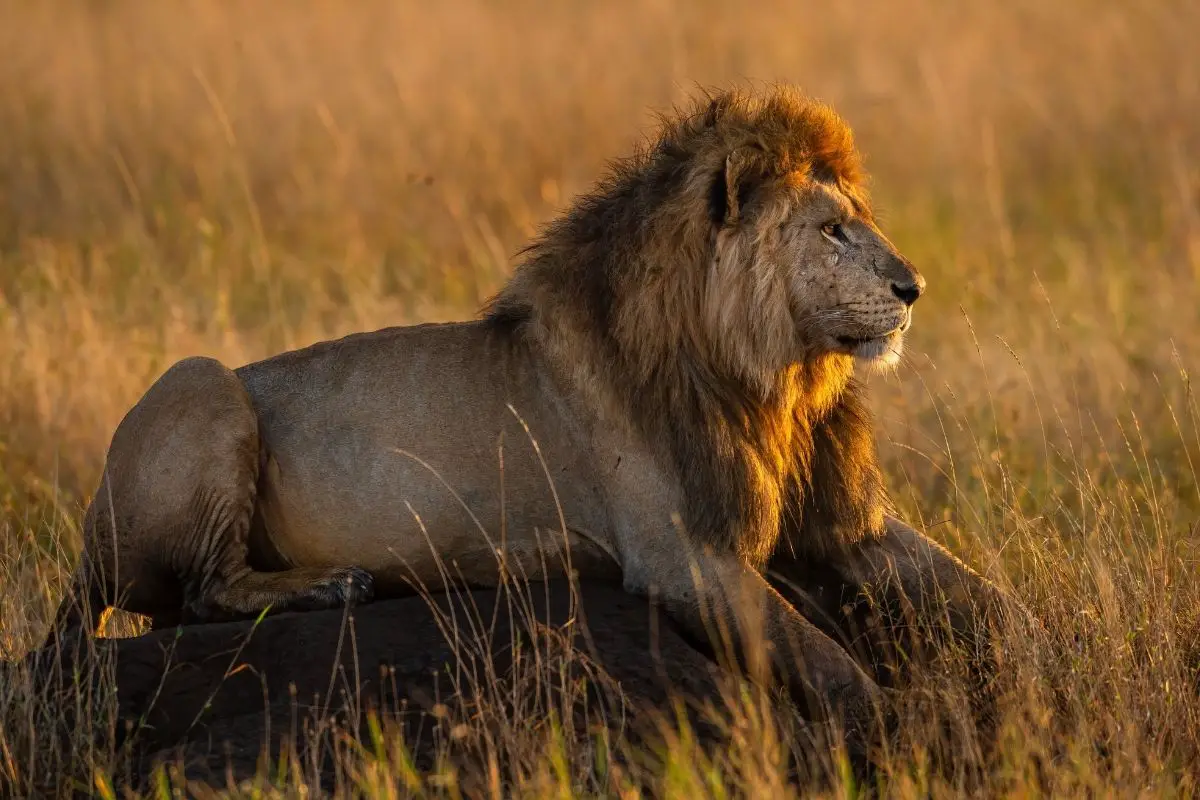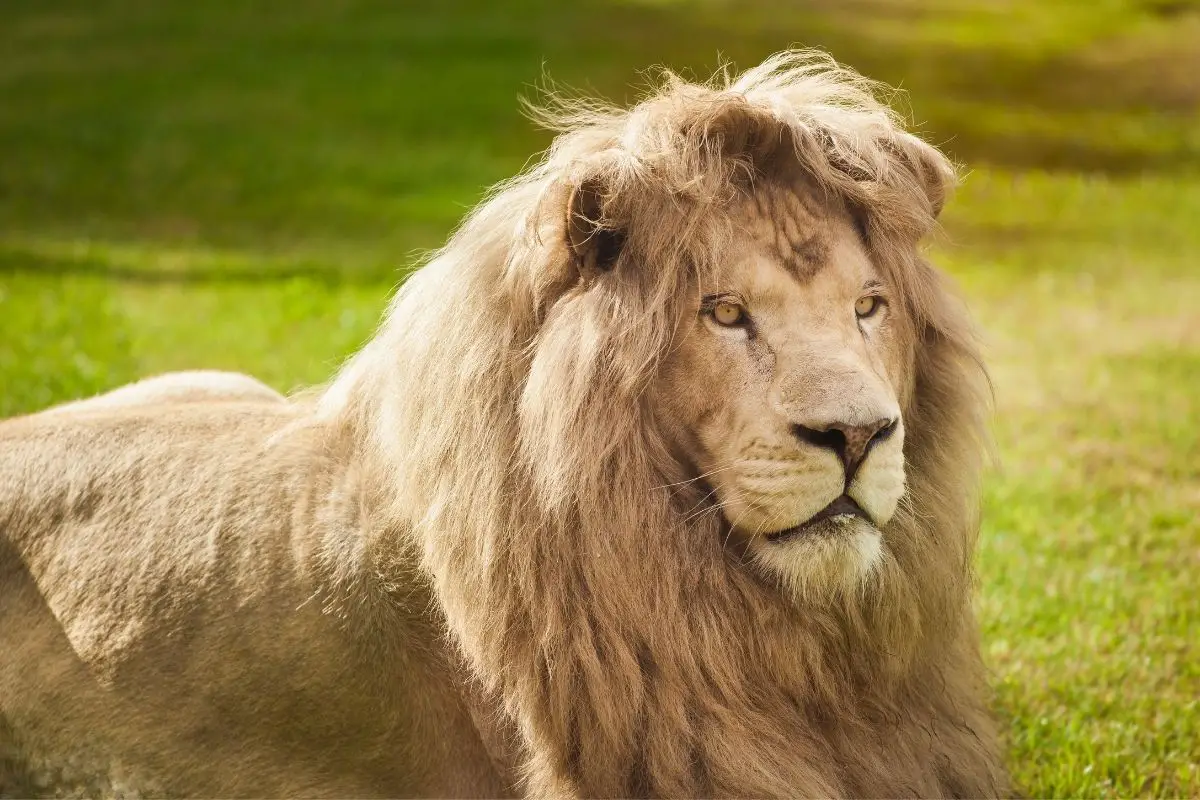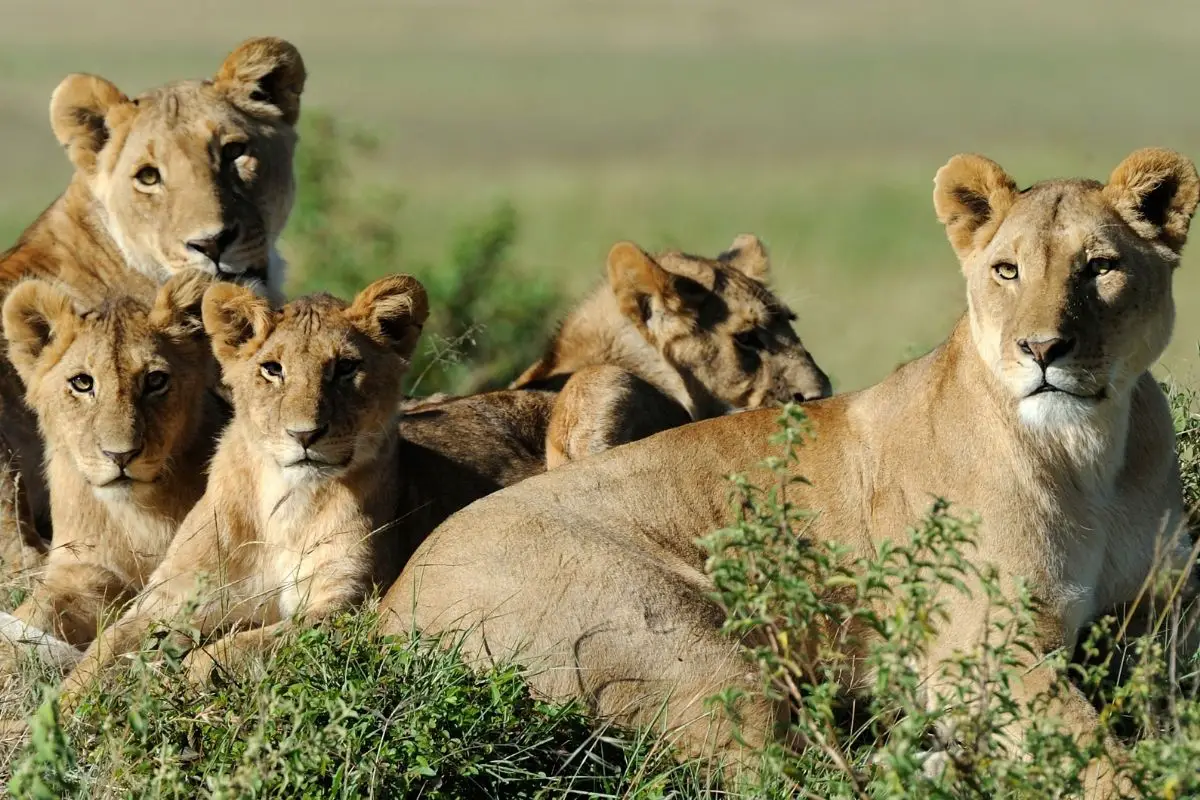Siberian tigers, also known as the Amur tiger, is the largest of the world’s big cats. These majestic predators once roamed across northern Asia but are now confined to the Russian Far East.
Siberian tigers are awe-inspiring creatures, but they are also endangered. Read on to learn everything you need to know about Siberian tigers, including their size, habitat, diet, population, and conservation status.
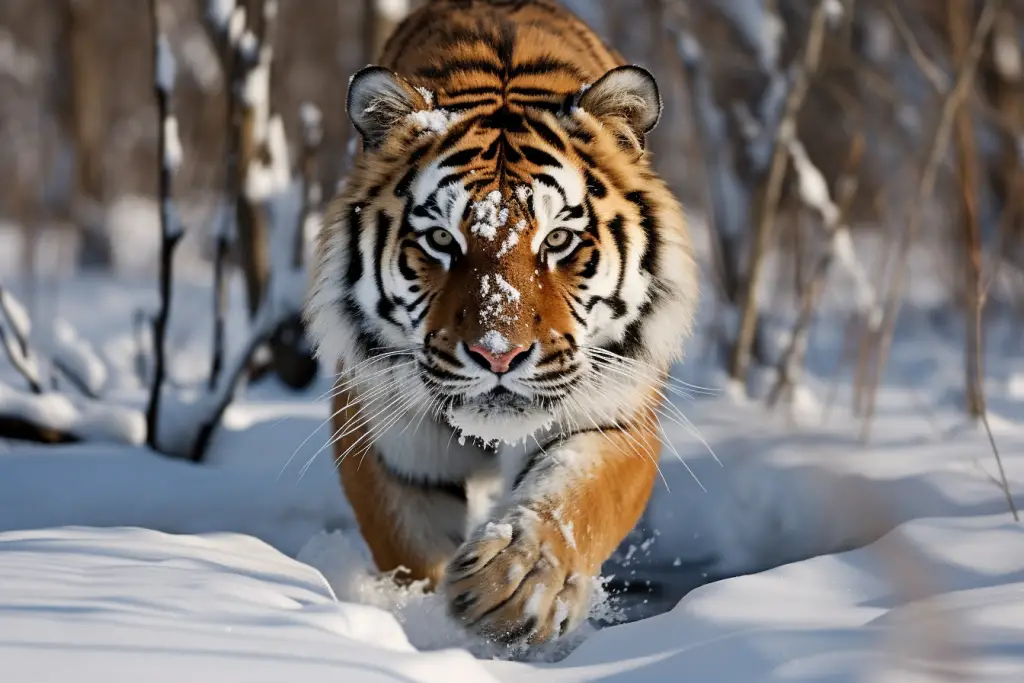
Siberian Tiger Physical Characteristics and Size
Siberian tigers are the heaviest cats in the world, with males averaging around 660 pounds in weight while females are significantly smaller at 370 pounds. The largest Siberian tiger on record weighed a staggering 1,025 pounds!
Siberian tigers measure 10-12 feet in length and 3-4 feet at the shoulder. Their striped coats are russet to rusty-yellow in color with fewer and narrower stripes than other tiger subspecies.
White areas are found on the chest, neck, muzzle, and stomach. This camouflage blends well with the tiger’s snowy habitat.
Siberian tigers have stout, heavily muscled bodies, thick necks, and sturdy forelimbs to tackle large prey. They also have white fur around the neck that forms into a “ruff” which gives them a distinctive appearance.
Their paws are huge, with hind paws measuring up to 6 inches wide. Powerful jaws deliver killing bites to prey’s neck.
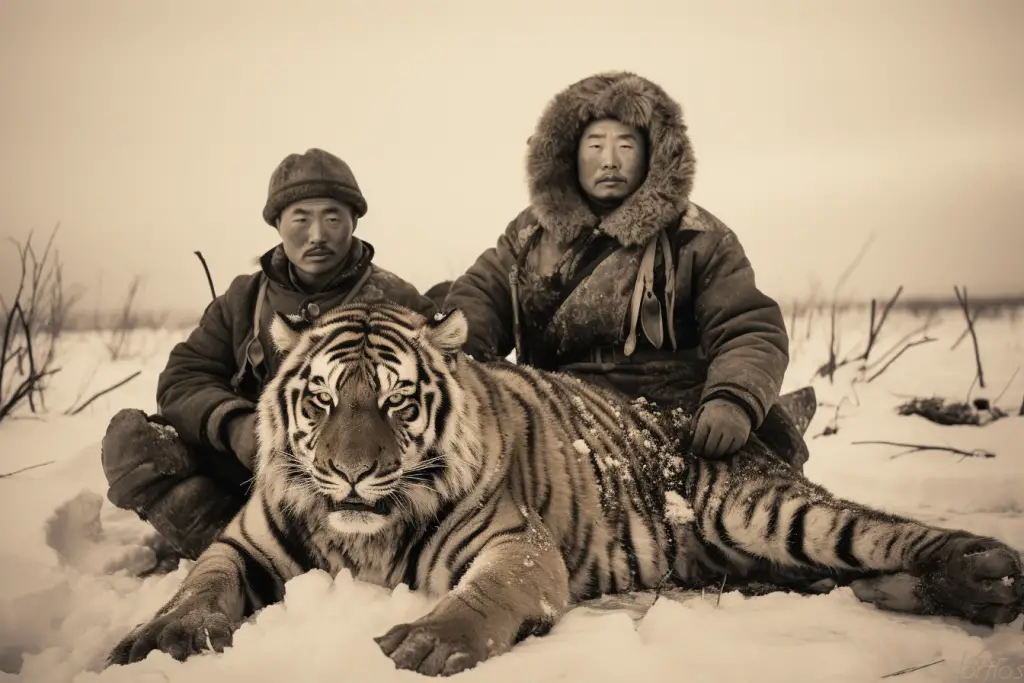
Siberian Tiger Habitat and Range
Siberian tigers were once found across northern Asia, from eastern Turkey and the Caucasus Mountains to the Russian Far East. Their historical range stretched over 2 million square miles. This was the largest range of any tiger subspecies.
Today, Siberian tigers inhabit only a fraction of their former territory. Hunting and habitat destruction decimated their numbers in the 20th century. Their sole remaining stronghold is in the Russian Far East where around 550 tigers survive in the mountainous birch forests.
This region has a cold, snowy climate and supports Koren pine and oak forests as well as lush grasslands that provide ideal Siberian tiger habitat. The tigers prefer forested areas near water and with plenty of prey.
Their range stretches south from Vladivostok to the Russia-China border. The Sikhote-Alin mountain region contains more than 90% of the remaining Siberian tiger population.
Siberian Tiger Diet and Hunting
As opportunistic predators, Siberian tigers feed on a diverse range of prey depending on availability. In Russia’s Sikhote-Alin Reserve, sika deer make up the bulk (84%) of the tiger’s diet.
Other prey animals include wild boar, Manchurian wapiti, roe deer, musk deer, and moose. With their massive paws and powerful jaws, Siberian tigers can take down prey up to 1,300 pounds in size. However, they most frequently target prey weighing 60-180 pounds.
Nocturnal Hunters in Stealth Mode
Siberian tigers are nocturnal hunters, preferring to hunt at night when their camouflage allows them to ambush prey more easily. However, they will also opportunistically hunt in daylight.
Using stealth and patience, tigers stalk prey until close enough to pounce in a burst of speed. They then deliver a bite to the neck or back of the head to kill.
Tigers drag their kill to secluded spots and often cache or cover the carcass to return and feed later. They may consume up to 60 pounds of meat in one feeding. On average, tigers make a big kill once per week. If conditions permit, they will return to feed on the carcass for 3-6 days.
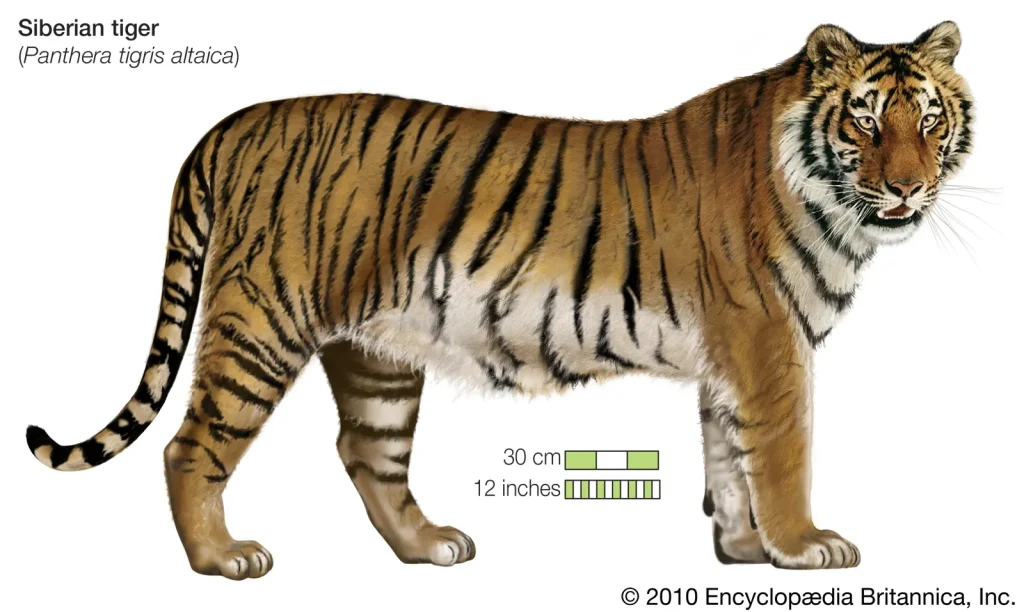
Siberian Tiger Social Structure and Life Cycle
Siberian tigers are solitary animals that only associate with others for mating. Each tiger maintains a defined territory that ranges in size from 78 to 450 square miles.
Males claim larger territories than females, and the ranges of both sexes overlap. Territorial disputes are sometimes settled with intense aggression and fighting.
Tigers spend much of their time patrolling and marking their territories with urine, scrapes, and scat. These scent markings signal possession of territory and help avoid encounters with neighboring tigers.
They also communicate using vocalizations like roars, moans, hisses, and other sounds.
Siberian Tigers Mating Cycle
Mating occurs throughout the year with a peak in late winter or early spring. After a gestation period of 3-3.5 months, the female gives birth to a litter of up to 4 cubs (average of 2-3).
Cubs are born blind and helpless in a sheltered den such as a cave, hollow tree, or thick vegetation. They nurse from their mother for 6-8 weeks until ready to follow her at about 3 months old.
Siberian Tiger Cubs and Cub Mortaility
Tiger cubs have a 50% mortality rate in the first two years. Those that survive stay with their mother for about two years, learning hunting skills, until they disperse at around 18-28 months old.
Males do not participate in rearing cubs. Females breed again about 2-2.5 years after giving birth. In the wild, Siberian tigers live to around 15 years old.
Siberian Tiger Population and Conservation Status
Siberian tigers have endured a catastrophic population decline over the past century. At the start of the 20th century, an estimated 3,000-5,000 Siberian tigers remained in the wild.
By the 1940s, tiger numbers plummeted to about 40 animals due to hunting and habitat destruction from human activities like logging and agriculture.
Russian Efforts To Save Siberian Tigers
Thanks to increased protections in Russia, Siberian tiger numbers have rebounded to around 550 today. However, the IUCN Red List still classifies Siberian tigers as Endangered.
They occupy just a fraction of their historical range, face ongoing habitat loss and poaching, and have low genetic diversity that endangers their future survival.
Siberian Tigers Are Endangered
Siberian tigers are among the most endangered tigers in the world. The remaining tigers are primarily confined to the Russian Far East where conservation efforts are focused.
The Siberian Tiger Monitoring Program, established in 1992, conducts regular winter surveys to track population trends. Anti-poaching teams work to curb illegal hunting that poses a major threat to the remaining tigers.
Protected Areas For Siberian Tigers
Several protected areas have been established specifically to safeguard tiger habitat, including Sikhote-Alin Nature Reserve and Lazovsky Nature Reserve.
However, many protections exist only on paper and greater resources are needed to enforce anti-poaching laws on the ground. Prey depletion also threatens tiger survival, so protecting deer and other prey species is vital.
Further conservation steps needed to protect Siberian tigers include enhancing anti-poaching measures, maintaining habitat corridors so tigers can disperse between reserves, monitoring population trends, and boosting law enforcement to stop the trade in tiger parts.
With stronger protection policies and continued dedication to conservation, the remarkable Siberian tiger can rebound and thrive in its frigid north Asian realm.
Siberian Tiger vs. Bengal Tiger
The Siberian tiger (Panthera tigris altaica) and Bengal tiger (Panthera tigris tigris) are both subspecies of the Panthera genus. They are regionally isolated from one another and exhibit some key differences in physical characteristics, habitat, and conservation status.
Siberian tigers, also known as Amur tigers, inhabit the cold boreal forests of Russia’s Far East. Bengal tigers are native to India and can be found across the Indian subcontinent.
While they occupy very different habitats, the two subspecies are close genetic relatives and can produce hybrid offspring.
Some notable distinctions of Siberian and Bengal tigers:
- Size – Siberian tigers are the largest tigers in the world, with males averaging 660 pounds compared to Bengal tigers that average 490 pounds.
- Coat – Siberian tigers have longer, thicker fur with paler coloration and fewer stripes, an adaptation to their snowy habitat. Bengal tigers have darker coats with more stripes.
- Habitat – Siberian tigers live in boreal and montane forests. Bengal tigers prefer tropical and subtropical rainforests, marshes, and grasslands.
- Range – Siberian tigers have a much smaller range limited to Russia’s Far East. Bengal tigers have a wider but fragmented range across South Asia.
- Population – Only around 550 Siberian tigers remain in the wild. Bengal tiger populations are still lower at around 2,500.
- Conservation – Siberian tigers are classified as Endangered while Bengal tigers are Endangered as well but with higher numbers.
Both tiger subspecies face common threats including habitat loss, poaching, and prey depletion.
Conservation of these iconic big cats relies on protecting remaining habitat, combating poaching, and fostering coexistence between tigers and local communities across Asia. Though regionally separated, the fates of Siberian and Bengal tigers are intertwined in the fight to save tigers from extinction.
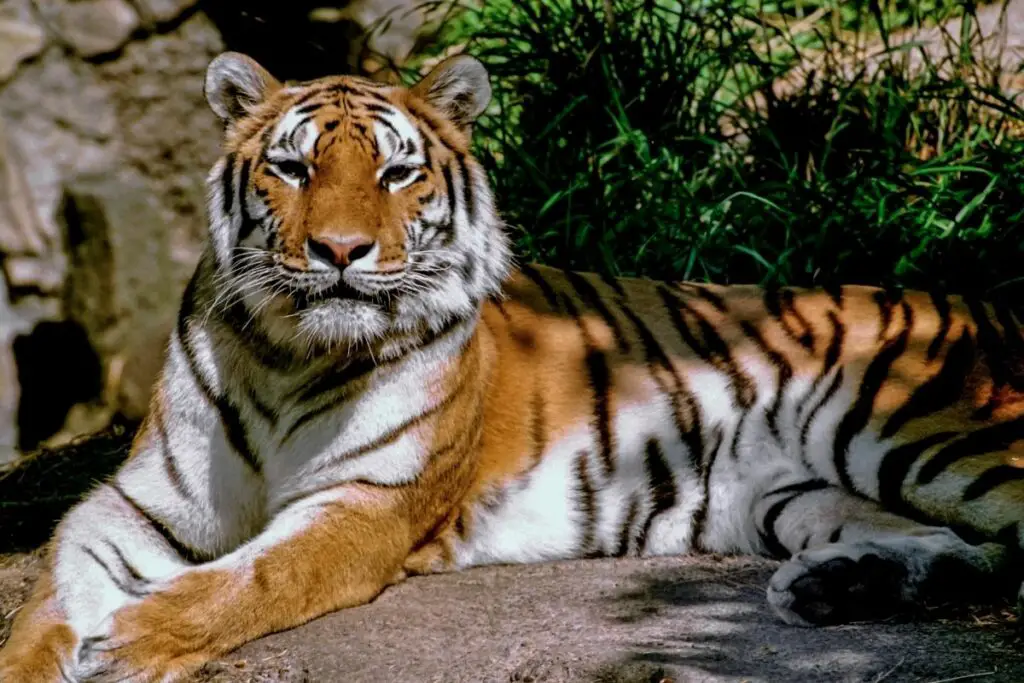
Comparing Siberian and Bengal Tigers
Siberian and Bengal tigers are both magnificent apex predators and priority species for global wildlife conservation.
They share many common traits but also have some distinctive differences as subspecies adapted to their own environments. Here is a more detailed comparison between these two incredible tiger subspecies:
Appearance
- Siberian tigers are noticeably larger and heavier than Bengal tigers. Full-grown Siberian tiger males average 660 pounds compared to around 490 pounds for male Bengal tigers.
- Siberian tigers exhibit wider rosettes, longer fur, and paler coloration compared to Bengal tigers. Their darker black stripes contrast with pale rusty-red fur.
- Siberian tigers have a mane-like ruff around their neck and thicker fur overall as an adaptation to their colder climate. Bengal tigers have a smoother coat better suited for hotter habitats.
- Siberian tigers have fewer stripes than Bengal tigers, ranging from 80 to 100 stripes versus 100 to 110 stripes on Bengals. Their stripes are also farther apart and occur in fewer places.
Habitat
- Siberian tigers are found in the boreal forest or taiga habitat of far eastern Russia. This consists of pine and larch forests with winter snow cover.
- Bengal tigers inhabit a variety of habitats including tropical and subtropical moist forests, mangrove swamps, savanna grasslands, and reed beds across South and Southeast Asia.
- Siberian tigers generally prefer altitudes below 3,000 feet with access to water and prey animals like elk and deer. Bengal tigers live from sea level up to nearly 10,000 feet in places like the Himalayan foothills.
Behavior
- Both subspecies exhibit similar solitary territorial behavior, maintain home ranges, and defend territories from other tigers.
- Siberian tigers are able to tolerate much colder temperatures than Bengal tigers given their adaptations like heavier fur, thicker fat layers, and smaller extremities that retain heat.
- Siberian tigers have longer mating periods that can occur throughout the year compared to more seasonal breeding in Bengal tigers.
- Prey preferences differ, with Siberian tigers strongly favoring elk and deer while Bengal tigers take a wider array of prey including deer, wild boar, water buffalo, monkeys, birds, and livestock.
Conservation Status
- Siberian tiger populations are highly endangered with only around 550 remaining in the wild, all in Russia’s Far East.
- Bengal tiger distribution is fragmented across southern Asia, with around 2,500 remaining. India hosts the largest population.
- Siberian tigers occupy just a small fraction of their historic range while Bengal tigers have lost over 90% of their former habitat across Asia.
- Threats facing both subspecies include habitat loss and fragmentation, poaching, loss of prey species, and human-tiger conflict. Aggressive conservation is vital.
- Due to their extremely limited numbers, Siberian tigers are at higher risk of extinction than Bengal tigers. However, both subspecies are Endangered.
Despite some variations, Siberian and Bengal tigers ultimately share a close genetic relationship as subspecies of Panthera tigris. Conserving the unique traits and endangered populations of each one is crucial to preserving the species as a whole.
With focused conservation plans that draw on their biological strengths, these magnificent tigers can thrive again in the wild.
Siberian Tiger FAQ
What is a Siberian tiger?
The Siberian tiger, also called the Amur tiger, is the largest cat species in the world. It is a subspecies of tiger native to the boreal forests of Russia’s Far East.
How big are Siberian tigers?
Siberian tigers are massive, with males averaging 660 pounds and females 370 pounds. The largest on record was 1,025 pounds. They measure 10-12 feet long and 3-4 feet tall at the shoulder.
What do Siberian tigers look like?
Siberian tigers have rusty-reddish fur with narrow, widely spaced black stripes. Their winter coat is pale with a distinct mane around the neck. White fur is also present on the chest, belly, and muzzle.
Where do Siberian tigers live?
The only remaining Siberian tiger habitat is in the Russian Far East. Their range stretches from northeast China across Primorsky Krai, Khabarovsk Krai, and into the Sikhote-Alin mountain region.
What is the Siberian tiger’s habitat like?
Siberian tigers inhabit temperate forests and woodlands including Korean pine, larch, and oak trees. They prefer areas with access to water and abundant prey.
How many Siberian tigers are left in the wild?
Populations have recovered to around 550, up from just 40 tigers in the 1940s. However, they still occupy less than 10% of their historic range.
What do Siberian tigers eat?
Siberian tigers prey primarily on elk and deer but also hunt wild boar, moose, bears, and other animals. They require about 20 pounds of meat daily.
How do Siberian tigers hunt?
Siberian tigers are nocturnal hunters that quietly stalk prey until close enough to attack with explosive speed and power. They kill with a bite to the neck or back of the head.
How are Siberian tiger cubs raised?
Tiger cubs stay with their mother for 2-3 years learning survival skills. Females raise cubs alone with no male parental care. Cubs have high mortality rates.
Why are Siberian tigers endangered?
Siberian tiger numbers plummeted due to habitat loss, poaching, and depletion of prey species. They now occupy a small fraction of their historical range.
What threats do Siberian tigers face today?
Continued habitat degradation, illegal poaching, loss of prey, and human-tiger conflict over livestock threaten remaining Siberian tiger populations.
What conservation efforts help Siberian tigers?
Anti-poaching patrols, protected habitat reserves, banning the tiger trade, and mitigating human-tiger conflicts are key conservation strategies to protect Siberian tigers.
Final Thoughts
Siberian tigers are truly incredible creatures and their presence should be respected.
With the likelihood of Siberian tigers becoming extinct in the near future becoming more likely every year it is more important now than ever to take the time to learn about this species and to take measures to help this animal continue to thrive and exist in the wild.
Supporting animal conservation charities that specifically work with and benefit animals that are close to extinction can be a great way of benefiting the fight to keep this, and other species on our planet for longer.
We hope that this piece answered any questions you may have had about Siberian tigers and that you now feel more familiar with this giant feline.
It is reported that over 650 Siberian tigers live in captivity and if you choose to go and see a Siberian tiger ensure you are visiting an animal that is being looked after and not being held for the owners or establishment’s profit.
- Bengal Cat vs Wild Bengal Tiger: Complete Comparison 2025 - October 31, 2025
- Complete Wild Cat Spotting Guide for Hikers 2025 - October 31, 2025
- Lynx vs Bobcat: Complete Field Identification Guide 2025 - October 30, 2025




